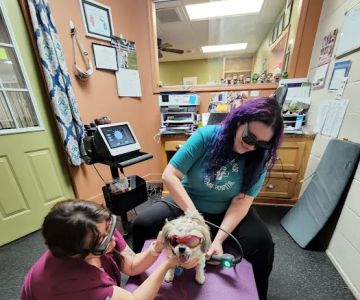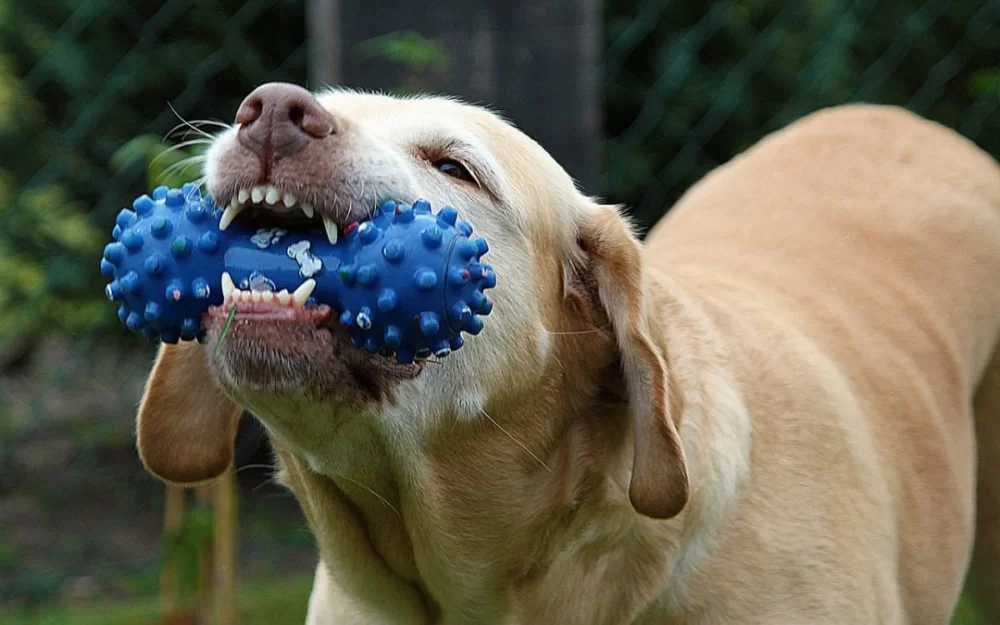Why Is My Dog Being Destructive at Home?
As a dog owner, there’s nothing more frustrating than coming home to find your favorite shoes chewed up or your furniture ruined. It’s easy to get upset, but understanding the reasons behind your dog’s destructive behavior is the first step in solving the problem. When I first faced this issue with my dog, I realized that his destructive tendencies weren’t just random acts of mischief – they were signs of unmet needs or unaddressed behavior issues. In this article, I’ll share insights on why dogs may become destructive and how to stop it.

13726 W 159th St, Homer Glen, IL 60491, USA
See DetailsCommon Reasons for Destructive Dog Behavior
Before we dive into solutions, it’s essential to understand the root causes of destructive behavior in dogs. Knowing why your dog is acting out will guide you in correcting the behavior effectively.
1. Boredom
One of the most common reasons dogs become destructive is boredom. Dogs are naturally energetic animals that require both mental and physical stimulation. If your dog doesn’t have enough to do, they may resort to destructive behavior as a way of entertaining themselves. I’ve seen this firsthand with my dog, who started chewing everything in sight when I wasn’t able to take him out for regular walks.
2. Anxiety
Another frequent cause of destructive behavior in dogs is anxiety. Separation anxiety, in particular, can lead to chewing, digging, and even urinating in inappropriate places. When dogs feel stressed or left alone for too long, they may try to relieve their anxiety by destroying things around the house. I noticed this with my friend’s dog, who started tearing up the couch cushions every time her owner left the house.
3. Lack of Proper Training
If a dog isn’t trained properly, they may not understand what’s acceptable behavior and what isn’t. Destructive habits like chewing or digging could be a result of your dog not knowing any better. I remember when I first got my dog; he chewed on everything because I didn’t reinforce boundaries early enough.
4. Teething
Puppies, in particular, go through a teething phase where they’re itching to chew on things. This is a natural process, but it can lead to destroyed furniture and shoes. It’s important to provide the right toys and outlets during this time to prevent them from chewing on inappropriate items.
5. Insufficient Exercise
If your dog isn’t getting enough physical activity, they’ll have excess energy that can turn into destructive behavior. Lack of exercise can lead to frustration, and if a dog isn’t able to burn off that energy in a healthy way, they might chew on furniture or dig holes in the yard to expend it.
Effective Solutions for Stopping Destructive Behavior in Dogs
Now that we’ve covered why dogs can be destructive, let’s look at some tried-and-true methods for preventing and managing these behaviors. Here’s what worked for me and could work for you too:
1. Provide More Exercise and Mental Stimulation
Physical exercise is essential for dogs, especially those with high energy levels. I quickly realized that daily walks and playtime were crucial for my dog’s well-being. Dogs need both mental and physical stimulation to stay happy and healthy. Interactive toys, puzzle feeders, and training sessions are great ways to engage your dog’s mind. The more you tire them out in healthy ways, the less likely they are to get into trouble.
2. Create a Safe and Comfortable Space
If your dog is suffering from separation anxiety, one of the most effective ways to prevent destructive behavior is to create a comfortable space where they feel secure when you're not around. This might include a crate, which provides them with a cozy den-like space. When I started crate training my dog, I found that it helped him feel safe and reduced his anxiety when I had to leave the house.
3. Use Positive Reinforcement for Training
Training your dog is key to preventing destructive behavior. Positive reinforcement – rewarding your dog for good behavior – is one of the most effective training methods. When my dog was a puppy, I used positive reinforcement to teach him what was acceptable to chew on and what wasn’t. Every time he chewed on his toy instead of my shoes, I gave him praise and a treat. This helped him learn quickly and made training fun.
4. Provide Plenty of Chew Toys
If you have a dog that’s prone to chewing, make sure they have plenty of appropriate chew toys to redirect their attention. For puppies, this is especially important during the teething phase. I found that my dog was more focused on his chew toys when I offered a variety of textures and sizes. This helped keep him occupied and saved my furniture!
5. Avoid Punishing Destructive Behavior
While it’s tempting to punish your dog for destructive behavior, it’s not always the most effective approach. Dogs don’t always associate punishment with the behavior, and it could lead to fear or confusion. Instead, focus on redirecting the behavior and rewarding good actions. I made the mistake of scolding my dog in the past, but I quickly learned that positive reinforcement led to better results.
6. Use Anti-Chew Sprays
If your dog is chewing on furniture or other household items, anti-chew sprays can be a helpful deterrent. These sprays have a bitter taste that dogs find unpleasant, so they learn to avoid chewing on treated items. I used an anti-chew spray on my furniture when my dog was a puppy, and it worked wonders in discouraging him from chewing on things he shouldn’t.
When to Seek Professional Help
Sometimes, despite our best efforts, a dog’s destructive behavior may persist. If your dog’s behavior is severely affecting your home life or if you notice signs of aggression or other behavioral problems, it may be time to seek professional help. A certified dog trainer or animal behaviorist can help you address underlying issues and develop a personalized training plan for your dog.
Additionally, if your dog’s destructive behavior is linked to anxiety or medical issues, a veterinarian may be able to provide valuable insight and suggest treatments such as anxiety medication or behavior modification programs.











